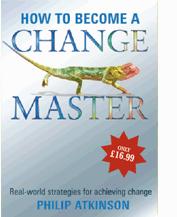
They each have interpersonal challenges ahead of them and asked what they could do to improve their presentation skills and, in particular, their outward enthusiasm.
The law of Requisite Variety!
I wanted to be both balanced and ensure that they retained their authenticity and, at the same time, improved their behavioural flexibility in interpersonal competence. It is not often you can get the opportunity to state the law of requisite variety (What is the law of requisite variety? It suggests that, the most flexible element in the system generally controls the system. Rigidity in behaviour may make us lose control over the outcomes we receive. It means those who have more adaptability will have a better chance of achieving their outcomes than those who don’t have the same combination of interpersonal styles and competence.
You are the Brand
Here are a few ideas – you may agree or not.
It is helpful to think of yourself as a brand. What brand do you want to become? What do you stand for? What are your core values that are reflected in your behaviours? It is helpful to think like this, especially if you are selling yourself in business and academically.
What is Enthusiasm?
Enthusiasm is an emotion rather than a trait – but it can be described. You get to choose what type of enthusiast to become. The enthusiasm you portray has to sync with your personality and the brand you want to build as you. After all, you are shaping your brand just as industry experts do: Gucci, Apple, Marks & Spencer, Virgin, Microsoft, Apple etc. – but you are doing it for yourself. How would you view the brand associated with Branson, Musk, Gates, Beyonce, Adele, etc.? More importantly, how do they differ and what precisely do they portray?
Authenticity is an issue
I know the idea is to be authentic – but sometimes you may have to ham it up. It is all about learning to switch on enthusiasm when required. If you are not naturally enthusiast in a specific setting like work, you will have to turn it on. It can be pretty tiring for an introverted person, but people have already made a judgement once you have created that first impression. Put your energy into the first part of your session. People form impressions quickly.
Lack of Enthusiasm may indicate a lack of interest, energy and ambition. It might not be the case, but people will not know if you are quiet or just plainly not interested. People will only experience how you respond, i.e. actively.
Busy and enthusiastic idiots
A big issue for enthusiasm is competence. You can have all the traits to be enthusiastic. Still, if you are considered less than competent, you would be perceived as a busy fool, an incompetent or idiotic enthusiast – noisy, having little of value to contribute or say. So you have to channel your enthusiasm through your knowledge and experience lens. People can see through the busy or noisy fool, and I am pretty sure that is not you. However, there is a matter of balance. You will understand the behaviours that will be reflected in the characteristics. Here are some traits that we think are relevant.
Active vs Passive
- Take the lead – actively lead discussions.
- Create the impression that you have something to say. “As far as I see, there are three key issues here, and they are X, Y, and Z. Is it okay if I expand on them?“ (It is nice to ask for permission but just assume it).
- Rehearse the topics of discussion – never rely on ‘seat of the pants’ thinking – it will drain you of confidence and signal uncertainty with others.
- Similar to activity – you have to be excited and emphasize your passion for whatever it is you are discussing.
- People with personal energy light up a room
- Demonstrate your knowledge and eagerness by introducing ideas rather than waiting in the wings to contribute as an afterthought
- Do not wing it – ever
- Not like a caged beast but somewhere along the scale where people know you want to contribute
- Starting the discussion with ‘I have a few thoughts on that’
- Do not behave like the idiots of the Apprentice BBC TV series
- It is unlikely that you get quiet introverts lighting up a room or attracting too much attention. So you would have to fake it and get into the Amy Cuddy Power poses (TedTalk)
- Emulate Beyonce avatar even be ‘Sasha Fierce’ (Youtube with Oprah) and Adela’s avatar (interview with Rolling Stone Magazine) ‘Sash Carter’
- This naturally increases when you practice all the moves outlined
- Prepare and rehearse so that it becomes second nature
- Few people have the natural confidence to wing subject areas. The consequence of winging it to tarnish your image, reputation and brand
- Prepare a la Amy Cuddy
- Take the space in the room – make your space bigger with more expansive gestures without being too ‘Jazz hands.’
- Stand upright – be erect or sit with a straight back. Don’t slump!
Final Words
You never get a second chance to make a great first impression. If this and other mentoring interests you, please email me. Philip Atkinson
 RSS Feed
RSS Feed

